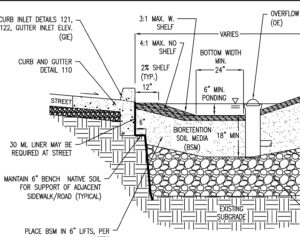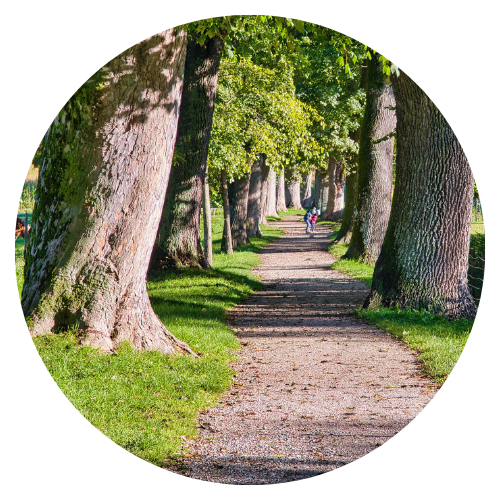LID Design and Construction
background
LID projects are designed specifically to utilize elements, materials, and construction methods in order to capture, slow, and treat stormwater runoff. Bioretention areas are one of the most commonly used structural LID stormwater control measures, due to the ability to provide multiple benefits and support regulatory compliance.
The Central Coast Low Impact Development Initiative (LIDI) has focused on bioretention design, as this type of LID facility is one of the most commonly used. LIDI worked with state and national experts to improve bioretention details and specifications based on years of implementation and lessons learned.
Resources available through LIDI:
-
-
-
-
- LID details and specifications
- Guidance on bioretention soil media
- Plant selection and landscape installation
- Full set of AutoCAD standard details for bioretention facilities, curb cuts, overflow inlets, and check dams
- Applicable municipal codes and ordinances
- Click here to view all resources
-
-
-
design
The use of appropriate design details and specifications, such as bioretention soil media and plants, is essential to achieve a successful LID project. Incorrect design/construction can reduce or eliminate the intended function of bioretention areas.
Common mistakes include:
- Use of the wrong plants or soil mix
- Incorrect placement or elevation of overflow inlets
- Improper grading that hinders the stormwater runoff from entering the facility.
Details and Specifications
Click here for the Stormwater Technical Guide for Low Impact Development PDF to assist with compliance with Stormwater Post-Construction Requirements.
Bioretention Engineering Standards Resources
- LID Parking Lot Technical Assistance Memo PDF
- LIDI Bioretention Guidance Technical Assistance Memo PDF
- LIDI Bioretention Standard Details and Technical Specifications PDF
- LIDI Bioretention Standard Details and Technical Specifications Memo 3/6/13 PDF
- Bioretention Standards Details and Diagrams PDF
- Bioretention/Dry Well Standard Details Diagram BMP PDF
- Biofiltration System/Dry Well Design Memo PDF
- Bioretention Standards Details (AutoCAD DWG in zip folder)
- Bioretention/Dry Well Standard Details (AutoCAD DWG in zipped folder)

Soils
Site Soil Infiltration Testing

Bioretention Soil Media (BSM) is an important element of the bioretention system. The BSM has a ratio of inorganic and organic materials to allow the appropriate infiltration rates for stormwater; facilitate pollutant removal through chemical, biological and physical processes; and provide a sufficient growing medium for plants. Research is still being conducted to determine the ideal specification for BSM.
Currently, the Central Coast Water Quality Control Board allows use of two BSM specifications:
- The Bay Area Stormwater Management Agencies (BASMA) developed a technical report that includes a BSM specification.
Access the BASMA Technical Report and BSM Specification document here. - A BSM specification was developed for the San Diego Region that includes a slightly lower compost percentage.
Click to access the San Diego Region BSM Specification with accompanying Memorandum here.
Construction of LID Projects
Although projects with LID features may look like conventional development projects, there are key differences construction contractors need to understand to build successful LID projects.
LIDI has developed construction training videos, technical assistance documents, and local material vendor lists to support LID construction. The videos provided to the right provide insight related to the construction of LID facilities.
Case Studies







